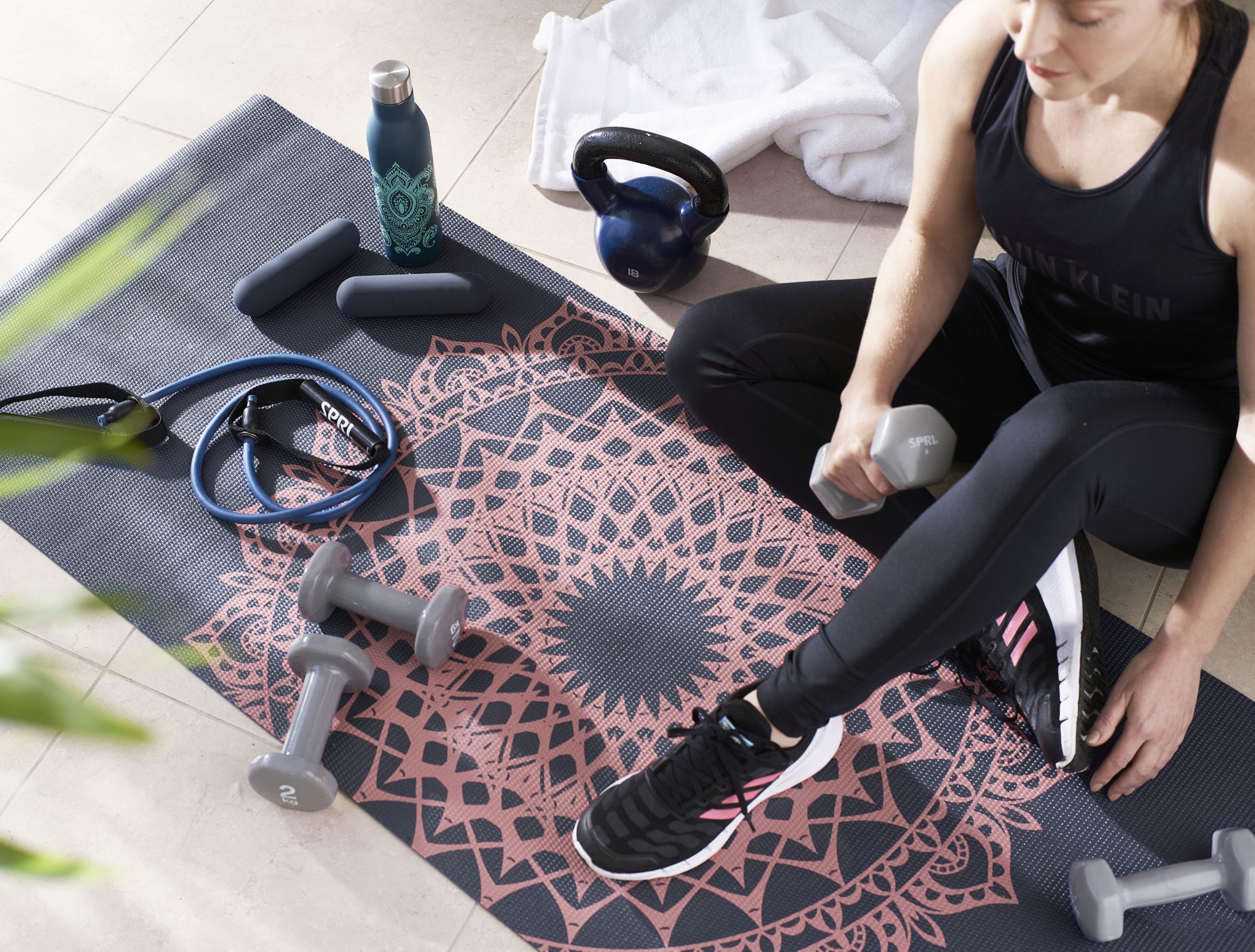How to sit properly when working at a desk
The shift towards flexible working has led to many of us hunching over laptops. Ward off aches and protect your posture with some expert know-how
Whether you’re still set up in your home office or your spare bedroom, or have returned to commuting to a communal space, there’s one thing that remains constant – the importance of a healthy posture. To achieve that, it pays to be aware of some basic techniques to protect your body and keep aching backs at bay.
Helping companies keep their employees in good shape is something ergonomics expert Lucy Chisholm is passionate about. With an estimated 6.9 million working days lost due to work-related musculoskeletal disorders in 2018-19, a comfortable workspace is something companies take seriously – and you’d be wise to do the same. How you sit is crucial to help avoid aches and pains in your back, neck and wrists.
‘When working at a laptop or a desktop computer, you should sit in an upright position, with your forearms and wrists at right angles when typing,’ says Lucy. ‘As a rough guide, your eyes should be about an arm’s length from your screen, and the top of the screen should be in line with your horizontal sight. I would always recommend raising your laptop on a riser, or even a pile of books or magazines, and using a separate keyboard and mouse. Think about your vision, too: control glare with blinds, and rest your eyes regularly by focusing on something further away instead of the screen. Try looking out of the window.’
No slouching
Sitting with your spine in a gentle S shape (when viewed from the side) gives your body maximum support and will discourage back pain. When you slouch, your spine tends to close into a C shape, which leaves you prone to musculoskeletal problems as well as neck and back aches. Aim to keep your knees lower than your hips, which helps to hold your spine in the right shape. When working from home, using wedge-shaped cushions on normal dining chairs will create this prime position, but you don’t have to sit like that all day.
‘Standing while you work keeps your spine in a good S shape, too,’ says Lucy. ‘A high stool at the kitchen worktop may not be comfortable for working on your laptop all day, but it’s a great location for video conferencing. You could even use an ironing board as a pop-up standing desk in a quiet spot.’ If you want to give it a go, put a portable desk raiser on top of your existing table, or rest your laptop on a stable pile of books, and try it for 15-20 minutes, a few times a day.
Whether you sit or stand, make your space uplifting. ‘We all benefit from joyful spaces,’ says Lucy. ‘To me, successful ergonomics is about the whole environment: the psychology, the ambient noise. It’s so much more than just a desk and a chair.’
Lucy’s advice to drink plenty of water, take regular breaks and move around as much as possible is applicable to all of us, but when it comes to our environment, she reminds us to apply some personality. ‘Whether it’s houseplants, art or a pair of good noise-cancelling headphones, create a sensory environment that’s completely individual to you.’
Flexible working
Yoga expert Nadia Narain, co-author of Self-Care for Self-Isolation and Self-Care for the Real World, recommends these easy stretches to try during and after long stints at a desk, whether that’s working from home or back in an office.
Take five
Staying still for long periods will compress the spine and cause a ripple effect of aches and pains, so take a break every 25 minutes and stretch for five. Stand up and lift your arms overhead. Take some deep breaths. Circle your hips a few times one way and then the other.
Find your sweet spot
Get a tennis ball and place it between your back (in the region of the shoulder blades) and the back of your chair. Lean into the ball, pressing hard and moving around until you find those ‘sweet spots’. You’ll know when you have. This one is our favourite.
Roll with it
Neck rolls are simple but effective. Very slowly turn your head to the right, as if you are drawing a circle with your nose. Breathe slowly and keep space between your teeth so that your jaw is relaxed. Stop anywhere on the roll where there is a particular point of tension and breathe into it. Turn three times one way and then three the opposite way.
Don't forget your jaw
Tension from a clenched jaw goes into our neck and shoulders and can cause headaches. Alleviate this by massaging along your jawline and into the cheekbones with clenched knuckles and fingers. You could also use a jade stone if you have one.
A good shoulder and neck stretch
This one can be done sitting or standing. Keeping your spine straight, bend your left elbow, take your right arm across your chest and place it in the left elbow crease. Pull your right arm to the left, keeping your right shoulder down. Take your left ear to your left shoulder and take five breaths. Make sure you have space between your lips and teeth. Repeat on the other side.









